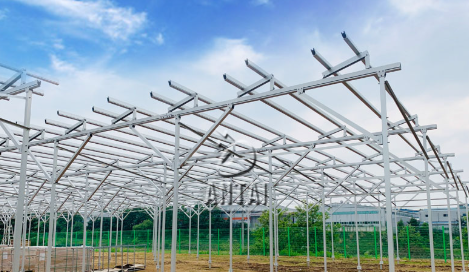Adjustable Structures for Modern Agriculture PV Solutions
November 09, 2025
Increasingly, agricultural businesses recognize the value of dual-purpose land use that combines traditional farming with renewable energy generation. The implementation of effective agriculture PV solutions requires specialized equipment that addresses the unique challenges of farming environments. These systems must accommodate crop growth patterns, farming equipment, and seasonal variations while maintaining efficient energy production. The right infrastructure can create harmony between agricultural activities and solar power generation, providing farmers with additional revenue streams without compromising their primary operations. Antaisolar approaches this challenge through adaptable mounting systems designed specifically for agricultural applications.

Adapting to Diverse Farming Requirements
Agricultural operations vary significantly across different crops, climates, and farming methods. Effective agriculture PV solutions must accommodate these variations through adjustable designs that can be customized to specific needs. The mounting structures should allow for height adjustments to accommodate different types of crops and farming equipment passing beneath them. The spacing between supports must consider both solar panel efficiency and the sunlight requirements of plants growing below. These adaptable features enable the same fundamental system to serve various agricultural settings, from open fields to greenhouse operations. This flexibility ensures that farmers can implement solar energy without disrupting their established agricultural practices.
Practical Implementation and Durability Considerations
The installation process for agriculture PV solutions must account for working farm conditions where time constraints and seasonal activities dictate scheduling. Systems designed for straightforward assembly with minimal specialized tools reduce installation time and labor costs. The structures must withstand agricultural environments,including exposure to moisture, soil chemicals, and potential contact with farming equipment. Galvanized steel components provide corrosion resistance while maintaining structural integrity under various weather conditions. These practical considerations ensure that the agriculture PV solutions remain functional and require minimal maintenance throughout their operational lifespan, providing reliable performance alongside active farming operations.
An important step toward more sustainable land use practices is the incorporation of solar power into agricultural output. The essential infrastructure for this integration is provided by effective PV systems for agriculture, which offer customizable designs to suit the unique needs of various farming operations. These solutions, when put into action, show that renewable energy can augment conventional farming rather than replace it. A well-planned agricultural PV system provides a promising future for farming businesses that are looking for more sustainable practices and ways to make more money. By providing a model for multi-use land development, these systems benefit both the agricultural community and the cause of renewable energy.

Adapting to Diverse Farming Requirements
Agricultural operations vary significantly across different crops, climates, and farming methods. Effective agriculture PV solutions must accommodate these variations through adjustable designs that can be customized to specific needs. The mounting structures should allow for height adjustments to accommodate different types of crops and farming equipment passing beneath them. The spacing between supports must consider both solar panel efficiency and the sunlight requirements of plants growing below. These adaptable features enable the same fundamental system to serve various agricultural settings, from open fields to greenhouse operations. This flexibility ensures that farmers can implement solar energy without disrupting their established agricultural practices.
Practical Implementation and Durability Considerations
The installation process for agriculture PV solutions must account for working farm conditions where time constraints and seasonal activities dictate scheduling. Systems designed for straightforward assembly with minimal specialized tools reduce installation time and labor costs. The structures must withstand agricultural environments,including exposure to moisture, soil chemicals, and potential contact with farming equipment. Galvanized steel components provide corrosion resistance while maintaining structural integrity under various weather conditions. These practical considerations ensure that the agriculture PV solutions remain functional and require minimal maintenance throughout their operational lifespan, providing reliable performance alongside active farming operations.
An important step toward more sustainable land use practices is the incorporation of solar power into agricultural output. The essential infrastructure for this integration is provided by effective PV systems for agriculture, which offer customizable designs to suit the unique needs of various farming operations. These solutions, when put into action, show that renewable energy can augment conventional farming rather than replace it. A well-planned agricultural PV system provides a promising future for farming businesses that are looking for more sustainable practices and ways to make more money. By providing a model for multi-use land development, these systems benefit both the agricultural community and the cause of renewable energy.
end
